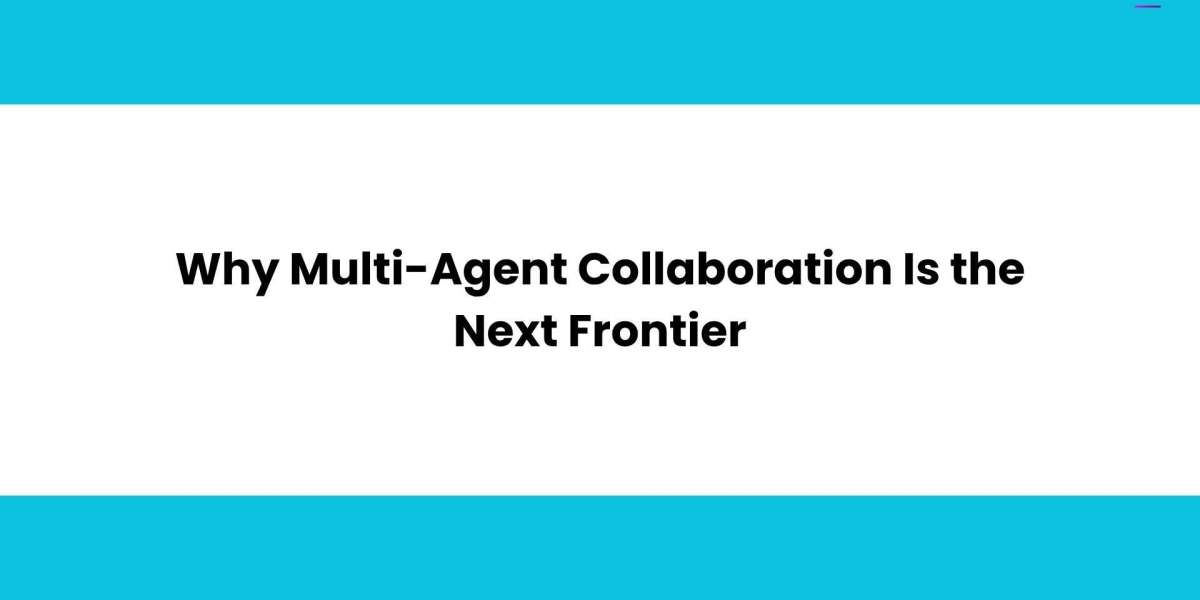The evolution of artificial intelligence is no longer about building smarter individual agents. It is about designing intelligent systems where multiple AI agents collaborate to solve complex problems, coordinate tasks, and support human users with seamless, synchronized efforts. This idea—called multi-agent collaboration—is gaining ground fast and is set to redefine how AI is deployed in business, technology, and daily life.
XTEN-AV, known for leveraging intelligent design and automation in AV workflows, already demonstrates the benefits of coordinated AI agents. From system layout to real-time documentation, its platform uses purpose-driven AI modules that communicate and adapt to streamline the entire process. This is just one example of how multiple AI agents can enhance outcomes through collaboration.
In this blog, we will explore why multi-agent collaboration is the next big step in AI evolution. We will look at its foundations, real-world use cases, advantages, and why companies like XTEN-AV are already building towards this future.
What Is Multi-Agent Collaboration?
Multi-agent collaboration refers to a system where two or more AI agents work together to achieve a shared goal.
Each AI agent in the system:
Operates independently
Has its own knowledge or capabilities
Communicates with other agents
Makes decisions based on shared objectives
Rather than acting in isolation, these agents form a collective intelligence. This mirrors how human teams divide tasks, share updates, and adjust roles depending on changing needs.
XTEN-AV and Collaborative AI in AV Design
XTEN-AV’s platform already demonstrates the principles of multi-agent collaboration. Its AI tools handle different aspects of AV system design:
One agent suggests ceiling speaker placement based on room size and acoustic needs
Another generates wiring diagrams instantly
A third oversees compliance with project standards
A fourth integrates cloud collaboration features
Together, they deliver a complete, cohesive output—faster and with fewer errors than traditional design tools. This is a practical example of how collaborative AI agents can improve both speed and quality in professional workflows.
Why Multi-Agent Systems Matter Now
With digital infrastructure expanding and workloads becoming more complex, it is no longer efficient to rely on a single AI agent to do everything. Here is why multi-agent systems are becoming critical:
1. Task Specialization
Each AI agent can be trained for a specific task—data retrieval, scheduling, analysis, etc. This improves performance because the agent becomes an expert in its domain.
2. Parallel Processing
Multiple agents can handle different parts of a workflow at the same time. This shortens project timelines and reduces bottlenecks.
3. Scalability
Adding new capabilities becomes easier. Instead of upgrading one massive system, you simply deploy a new agent that joins the team.
4. Resilience
If one AI agent fails or becomes overloaded, others can compensate or redistribute the task. This creates fault tolerance in complex systems.
5. Emergent Intelligence
As agents interact and learn from each other, new insights or solutions can emerge—just as team brainstorming can spark ideas beyond individual thinking.
Real-World Use Cases of Multi-Agent Collaboration
1. Smart Buildings
In a smart building, different AI agents can manage lighting, HVAC, security, AV systems, and occupancy sensors. Working together, they optimize energy use, comfort, and security.
Example: An Ai Agent managing the HVAC collaborates with an agent controlling AV room scheduling. If no meetings are scheduled, the agents reduce power to unused rooms automatically.
2. Logistics and Supply Chain
One agent tracks inventory, another forecasts demand, and another handles routing and delivery. Together, they ensure efficient and responsive operations.
3. Healthcare Coordination
In a hospital, AI agents might handle patient monitoring, drug inventory, staff scheduling, and equipment diagnostics. Collaboration ensures timely care and resource allocation.
4. Autonomous Vehicles
Each vehicle can be seen as an AI agent, but on a larger scale, they work with traffic control agents, pedestrian flow monitors, and weather prediction systems to optimize safety and efficiency.
5. Project Management Tools
Imagine a platform where one AI agent tracks deadlines, another flags risk, and another optimizes resource allocation. Collaboration between these agents creates smoother execution.
How Multi-Agent Systems Work
To collaborate effectively, AI agents need three core capabilities:
1. Communication
Agents must speak the same language, share updates, and send alerts when thresholds are reached. This can be done using protocols like agent communication language (ACL).
2. Coordination
They must understand how their tasks fit into the bigger picture. If one agent needs data from another, it should wait or adapt until the information is available.
3. Cooperation
Agents adjust their behavior for group success. They may defer, assist, or share responsibility, just like human collaborators do in teams.
Platforms like XTEN-AV already apply these principles by orchestrating AI modules that generate documentation, optimize layouts, and maintain system compliance—all in sync.
Benefits of Multi-Agent Collaboration
Higher Accuracy: Specialized agents working together reduce the chances of errors slipping through.
Increased Speed: Tasks are executed in parallel, significantly improving delivery time.
More Flexibility: Each agent can be updated, retrained, or swapped out without rebuilding the entire system.
Better User Experience: The system responds more intelligently to dynamic requests and delivers more complete solutions.
Future-Proofing: As new technologies arise, they can be added to the system as new agents rather than overhauling everything.
Challenges to Overcome
Inter-Agent Conflicts: Agents may produce conflicting recommendations without a coordination mechanism.
Data Integration: Agents must have access to consistent and synchronized data.
Security and Privacy: When agents share sensitive information, it must be protected.
Transparency: Users need visibility into how agents make decisions and work together.
These challenges are similar to the early days of cloud computing—but with proper design, multi-agent systems can become just as trusted and widely adopted.
The Future of AI Collaboration
In the coming years, we will see more real-time collaboration among AI agents:
In business, agents will oversee sales, finance, HR, and IT in one integrated system.
In consumer tech, AI assistants will coordinate calendars, emails, shopping, and smart home tasks.
In AV, platforms like XTEN-AV will evolve further by integrating third-party agents, such as room scheduling or IoT monitoring tools.
This is not science fiction. It is already happening—quietly, efficiently, and behind the scenes of smart platforms like XTEN-AV.
Conclusion
Multi-agent collaboration represents the next evolution in artificial intelligence. By assigning tasks to specialized agents and enabling them to communicate and cooperate, businesses can unlock levels of speed, insight, and reliability that traditional automation cannot match.
At XTEN-AV, this philosophy is already in action. Its design platform coordinates multiple intelligent modules to deliver fast, accurate, and scalable AV solutions. It is proof that when AI agents collaborate, the whole becomes much greater than the sum of its parts.
The next frontier of business innovation will not be led by one AI agent, but by many—working together, learning together, and building smarter systems for a smarter world.
Read more: https://ekonty.com/blogs/341679/Top-AI-Agent-Use-Cases-in-Business-Process-Automation














